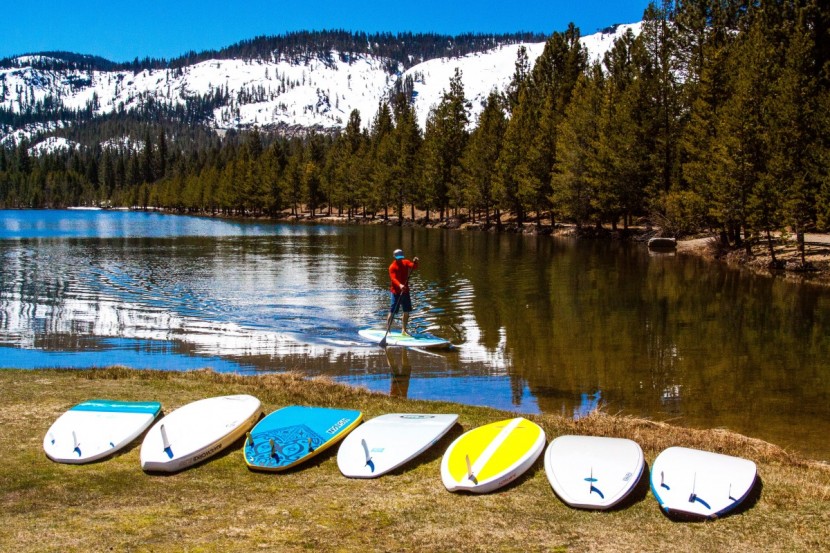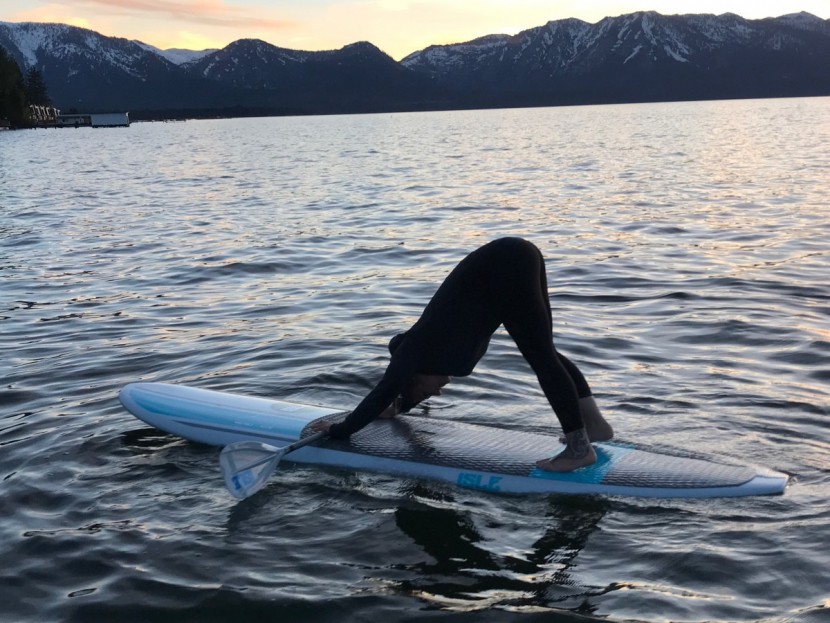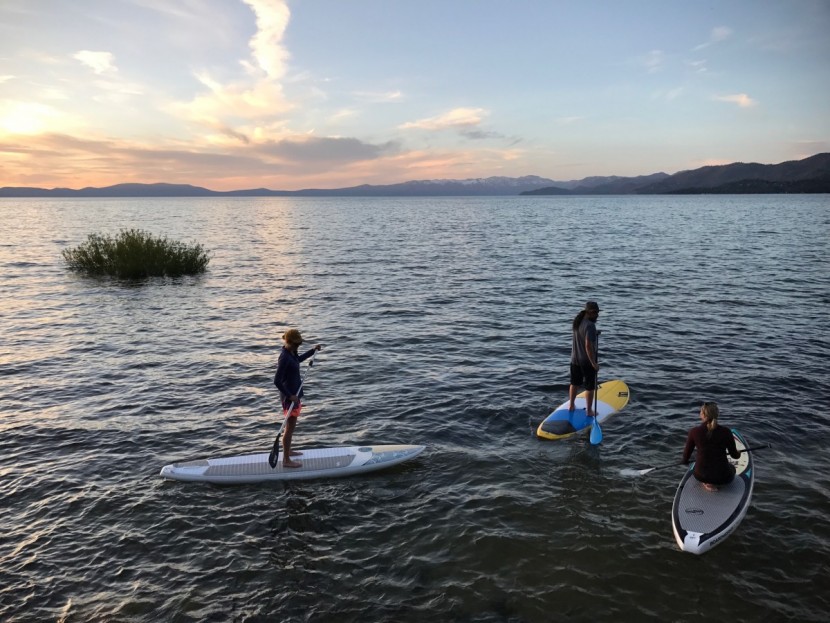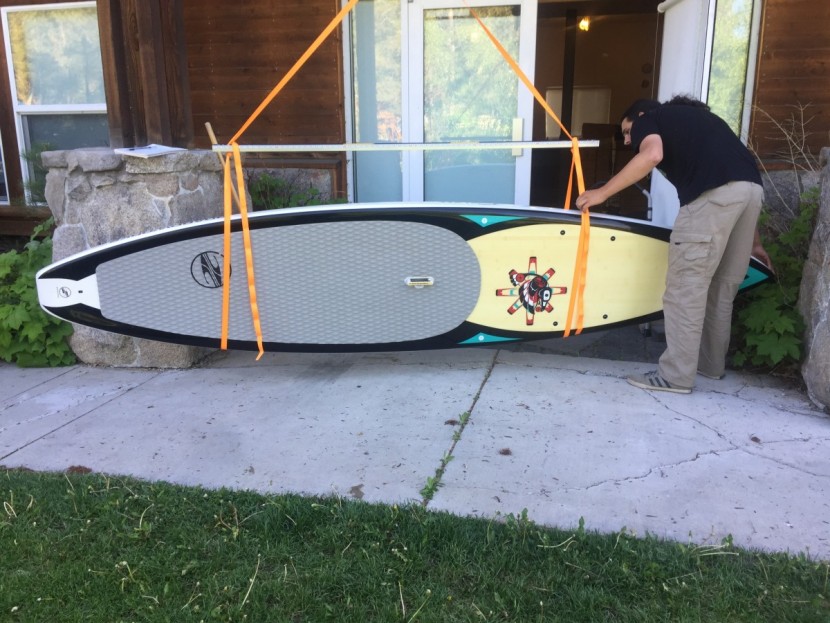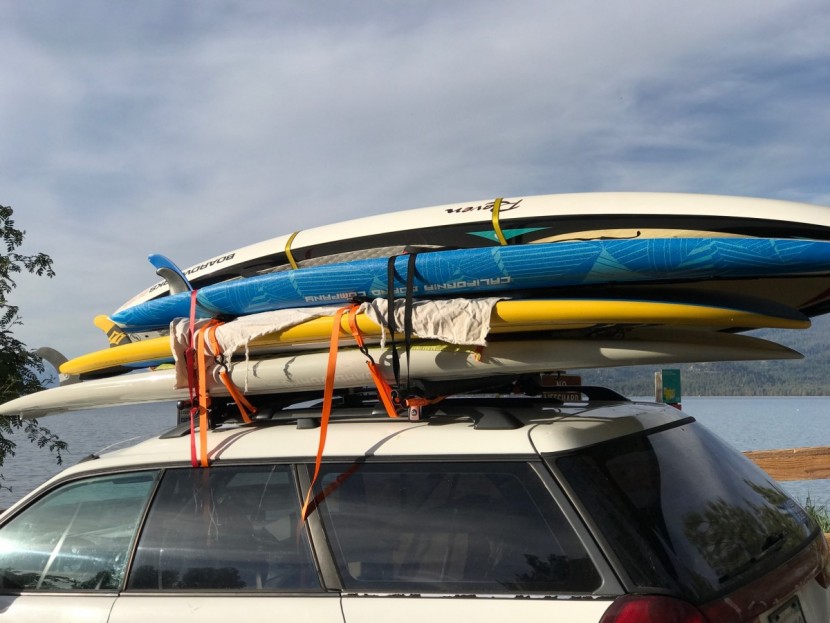We bought all of the best rigid and inflatable paddle boards and put them through a rigorous series of side-by-side tests to rank their performance. We spent hours testing and paddling each board on both calm and rough water, even conducting time trials and maneuvering through a slalom course. We also tested how easy it was to move and transport the boards and assessed their durability and stability. The following sections detail our testing process in each of our five rating metrics.
Glide Performance
Our first test for this metric involved counting how many paddle strokes it took to cover a preset distance on flat water with each board. We tested this in a small, protected lake on a calm, clear day.
The second test was a timed test on a measured course with each board. Our lead tester paddled at medium intensity and rested sufficiently between trials to prevent fatigue. We conducted two trials with each board and averaged the results to minimize variability. The final test for glide performance was identical to the second but in rough water. This test was performed on a much larger lake in windy conditions, causing small waves and more turbulent conditions.
Stability
The first test for this metric was rough water handling. We had a panel of moderate-to-experienced paddlers take the boards out in rough and windy conditions and provide their opinions. These testers took all of the boards out on the same day and cycled through them to get the best side-by-side comparison possible. Conditions were rough enough that more than one tester ended up taking an unexpected dip due to a surprise wave, wake, or gust of wind.
Our second test was to see how the boards handled when there was more than just a solo paddler on board. We took the boards out with both kids and dogs, rating their stability. Thankfully, all the boards were stable enough that no one inadvertently ended up in the water.
Next, we had a few beginner paddlers (first time on a board to less than three prior times paddling) take the boards out and give us their opinions. Then we had a person who was experienced with yoga attempt to do some basic poses on the boards that were advertised as being suitable for yoga and recorded their opinion. We didn't factor this into the overall scores, as performing yoga on some of the racing boards would have led to catastrophic yet comical results.
Maneuverability
To assess the maneuverability of each board, we conducted two separate tests and recorded the general opinions of our testers throughout all our testing sessions. The first test was a slalom course. We set up a reasonably difficult course, and our lead tester took each board through the course and back as fast as possible, allowing sufficient time to rest between trials to reduce fatigue.
Our second test in this metric was completing a 180-degree U-Turn with each board, attempting to complete the entire turn without back-paddling. The range of performance in this test was comically wide, with some boards abruptly turning without issue while others forced us to abort the test as they were about to hit the shore. We scored based on the paddler's opinion, the observable results, and the GPS track of each board using the Strava app on an iPhone.
Ease of Transport
To find out how easy or hard each board is to transport, we weighed each, noted the ergonomics of the handle, rated the ease of carrying them on land, and examined the difficulty of loading the boards on a car. As is our custom, we weighed the boards ourselves and scored based on our measured weight rather than taking the manufacturers' claims at face value. Lighter boards scored higher. Heavier boards lost points.
Quality of Construction
This final metric evaluated the durability of these boards. To evaluate this, we looked at common issues in user reviews and the post-testing condition of each board. While we were as careful as possible, we conducted extensive testing over a short period, moving tons of boards back and forth — likely much more than most users would.

